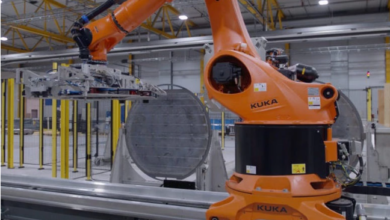Steelmakers consider GW electrolyser for hydrogen-based DRI plant in France

Liberty Steel (a UK HQ steelmaker), Paul Wurth (a steel technology company and a part of Luxemburg based SMS Group) and Stahl-Holding-Saar (SHS) (a German steelmaker) agreed to develop a hydrogen-powered steelmaking plant in France.
The three partners signed a memorandum of understanding to explore the potential for a 1 GW hydrogen plant which will power a 2 million tonne DRI plant at the Alvance Aluminium Dunkerque site, France. This is also understood to be the first DRI plant in France. The HBI is aimed to be shipped to feed Liberty EAF furnace in Ascoval, France, with any surplus can be sent to the company blast furnaces in Ostrava and Galati and the SHS-group’s Dillinger and Saarstahl plants in Germany.
The potential DRI plant in Dunkerque is also expected to initially use a mix of hydrogen and natural gas as the reductant to produce DRI before switching to 100% hydrogen once the electrolysis production unit is complete.
Sanjeev Gupta, Executive Chairman of GFG Alliance and Liberty Steel Group, said: “Hydrogen steel making has the potential to solve this issue, and we’re determined to collaborate with like-minded partners to it make it happen.”
Commodity Inside, a consultancy, told H2 Bulletin that the ideal locations for DRI plants are where natural gas is available in abundance. The low-cost natural gas makes iron ore processing economical. Some research works show that nearly 600 Nm3 of hydrogen is required to produce one tonne of iron through the DRI method. On that basis, 1.2 billion Nm3 of hydrogen would be required to produce 2 million tonnes DRI. Commodity Inside ascertains that with assuming the 600 Nm3 as a benchmark, 2 million tonnes DRI plants would require around 1.72 billion Nm3 of hydrogen.
Georges Rassel, Chief Executive Officer at Paul Wurth, said: “We are convinced that this project will contribute to paving the way for the urgently required technology switch in the metals industry.”
Martin Baues, Member of the Board of Directors for Technology at SHS, Dillinger and Saarstahl, said: “This partnership represents an important building block on the way to carbon-neutral steel production and will help us to further reduce our carbon emissions on the basis of this technology and at the same time gain important experience in the use of hydrogen in steel production.”
Liberty said to have been working with both partners on the project’s technical and economic viability since last year. The partners will now further look into the various aspects of the project, including refining the feasibility study, looking for potential partners in the value chain, and funding opportunities. Paul Wurth is likely to supply DRI technology and help with electrolyser technology for hydrogen production through its partnership with Sunfire.
Paul Wurth and SHS have recently signed a Memorandum of Understanding (MoU) with Rio Tinto to explore the potential for a low-carbon DRI plant in Canada using hydrogen.
